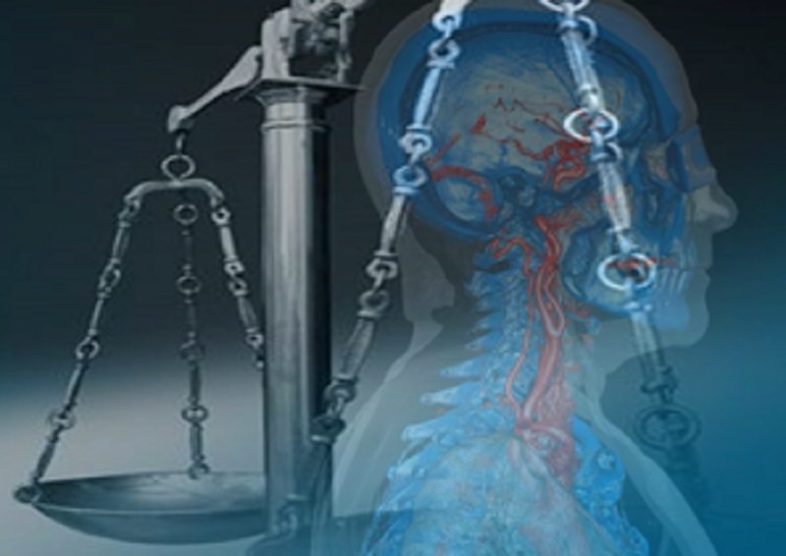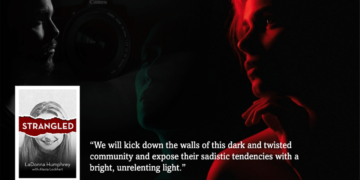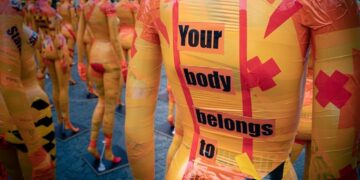Late in the evening of November 8, 1983, Officer Mike Hibbens and Detective Dennis O’Brien from the Bloomington, Illinois Police Department attended 313 Carl Drive to conduct a welfare check. Relatives of Susan Hendricks and her young children were concerned they weren’t able to contact her. The two men, both seasoned officers, made a horrifying discovery that chilly autumn night in the upstairs bedrooms of the house. 30-year-old Susan and the three young children, Rebekah aged 9, Grace aged 7, and Benjamin aged 5, had been violently murdered in their beds. Lying on one of the children’s beds were an ax and a butcher’s knife, their blades still covered in blood.
Later that same night another Bloomington resident got a call. Steve Vogel was the News Director of WJBC radio and the caller told him there was a multiple death on Carl Drive. His arrival at the scene and realization of what had happened inside that house stunned him. A feeling that has stayed with him and driven his commitment to this case across the 36 years that have now passed since it happened.
Susan Hendricks was married to David Hendricks, an orthoptist, and prosthetist who ran a successful business in Bloomington designing and providing orthopedic back braces. David Hendricks was in Wisconsin on a business trip when his family were found murdered inside his home after he too had expressed concern at being unable to contact his wife.
In the weeks after the murders, police determined that the house had been staged and no burglary had taken place as they first thought. David Hendricks had carried out a number of television interviews after the murders appealing for information and they were interviews that aroused suspicion. Prosecutors, body language experts, and the Assistant State’s Attorney felt David Hendricks was being deceitful and they began to take a closer look at the seemingly devastated husband and father. Before that year was out and within a month of the killings, David Hendricks had been arrested and charged with murdering his wife and three children.
“The evidence will disclose David Hendricks to be an example of an individual who appears to live a life as a model husband, father, as well as a Christian with a high degree of self-discipline, but who in actuality is materialistic and indulges in luxuries that he will not allow other members of his family.”
– Assistant State Attorney Brad Murphy
The following year he went on trial facing four counts of murder after being indicted by a McLean County grand jury.
The prosecution alleged David Hendricks had murdered his family in the hours before he left for his business trip to Wisconsin. David they said was living a double life. A materialistic selfish man who was in contact with other women despite this being against his faith and religion. It was precisely this the prosecutors told the jury, that left David with an inner turmoil where his guilt and shame drove his rationalization to murder his family and free him to continue his lifestyle as he wished.

“David was sitting in front of a police investigator. He was present. He was visible. He had a name. He had a face. He had an identity. He could be described. He could be identified. He could be interrogated and he was… And he could be held accountable. I do believe that you are going to agree with us that you cannot find guilt beyond a reasonable doubt in this case.”
– Criminal Defense Lawyer, Harold Jennings
The defense counter-argued that David Hendricks spent a relaxed evening with his family on the night of November 7, before leaving for his business trip.
He had no involvement in their deaths they told the jury. He had been held accountable for these killings they said, simply because he was the only surviving family member left.
After a nine-week trial, the jury returned a guilty verdict. When it came to sentencing, despite the death penalty being an available option, Judge Richard Baner chose to give four consecutive life sentences to David Hendricks, following comments which came as a surprise to everyone. “I cannot in good conscience apply the sanction of death unless I have been convinced of his guilt beyond a reasonable doubt. I have not, and mere belief is not enough.” he said, and for that reason, he spared David Hendricks’ life.
This was, however, far from where the story ended. Steve Vogel sat through every day of that trial taking copious notes and becoming more and more surprised and concerned by what he heard. He made the decision to write a book on the Hendricks’ case. To ask the questions some were afraid to and try, within his hometown with people he knew involved, to get to the truth. That book he called Reasonable Doubt. Released as a hardback in 1989, five years after David Hendricks was convicted, Steve Vogel continued to track the Hendricks’ case in the years that followed.
Despite all of David Hendricks’ appeals being rejected, in 1990 the Supreme Court of Illinois announced they were going to reconsider the case. Reasonable Doubt appeared as a mass-market paperback just months after this announcement and quickly became a New York Times Bestseller. As the case continued to be reviewed by the Supreme Court, multiple editions of Reasonable Doubt were published.
The decision of the Supreme Court was to overturn David Hendricks’ conviction and in 1991 he faced a second trial for the murders of his family. At that trial, after seven weeks of testimony, the jury returned an entirely different verdict. Not Guilty. David Hendricks was released from prison after serving seven years behind bars.
Reasonable Doubt was updated to reflect this decision and became a part of the St. Martin’s Press “True Crime Classics” series. David Hendricks moved to Florida soon after his release. He has rebuilt his business and again has become a successful businessman. He and his wife (his fourth) just celebrated their 17th anniversary. They have two young children.
Steve Vogel released a new edition of Reasonable Doubt in 2018. It was an extended edition adding about 2,000 words and several photos, concurrent with the premiere of an hour-long program about the case on the “Investigation Discovery” cable TV channel.
Reasonable Doubt: A Shocking Story of Lust and Murder in the American Heartland
2018 Edition, by Steve Vogel
Bookbaby; Reissue Edition, April 29, 2018,
Paperback, Kindle, and Audiobook, 500 Pages
“Readers often comment they must continually remind themselves that this story is real, that Reasonable Doubt is testament tothe fact truth is stranger than fiction. The book has also been used in college-level criminal justice courses to explain and illustrate the legal concept of reasonable doubt.”
Buy From Amazon
Visit the Author’s Website
This is a case where so many questions are still left unanswered. There were only two scenarios that could be involved with regard to David Hendricks. Either he is a husband and father capable of violently murdering his wife and three children and then effectively covering his tracks leaving no evidence behind and, then able to go on with seemingly normal, respectable, and successful life after his conviction is overturned and he is acquitted. Or, he is a man who is entirely innocent of the murders of his family. A man who genuinely was away on a business trip when his wife and children were brutally murdered inside his own home. Worse than that, he was then accused, tried and convicted for the murders which he didn’t carry out. It’s very hard to wrap my head around either of these scenarios but what I find the most disturbing, is that one of them is true. We just don’t know which one.
I have been lucky enough to talk with Steve Vogel and ask him some questions about this case and his book Reasonable Doubt. His answers are fascinating and show us just how much further this case has continued after the initial trial verdict back in 1984.
Q & A with Author Steve Vogel
Q. How difficult was it this being your own hometown, knowing many of the people involved and those investigating this crime? You were in a unique position and it’s a hard task to ask questions with such a personal knowledge and standing in the exact community where this crime happened. Was that something you battled with in writing Reasonable Doubt and being as honest and probing as you were in your writing?
SV – Interesting question. When the Hendricks family murders occurred, the community had about 100,000 residents and I had been news director of its dominant broadcast news source for about 10 years, maintaining what I guess you could describe as a neighbourly-but-arms-length relationship with the people we covered, including those in charge of investigating and prosecuting crime.
The ax slayings of a young mother and her three children would be big news in any community, but nothing like this had ever occurred here. In the year leading up to the first trial of the husband and father of the murder victims, both the prosecution and defence were silent about the circumstances of the case. Most people, of course, assumed that the defendant must be guilty. He had, after all, been arrested and held without bail.
I personally covered every moment of the nine-week trial held 140 miles away on a change of venue. It became clear that the prosecution case was completely circumstantial.
My principal goal in the book was to put readers in the jury box, giving them a detailed view of the evidence presented so they could make their own judgment on whether the reasonable doubt standard had been achieved. But to answer your question: Yes, it took some courage for me to write in the epilogue of the first edition that prosecutors may have convicted an innocent man.
Q. To me it feels that these murders must have been pre-planned by whoever carried them out. The murders themselves and the clean up afterwards down to the murder weapons being left at the scene but with no evidence remaining to point to the killer. It sounds like it was the opposite of a disorganised crime scene?
SV – One of the expert trial witnesses said it was “the cleanest bloody crime scene” he had ever seen. The splatter pattern on the wall of the bedroom where the three children died made it clear the killer had to have been sprayed with his victims’ blood. Even so, there were no footprints, no fingerprints, no smudges, nothing.
Q. There is a big question I feel on the prosecution’s theory of one man, their father, killing three children on his own without any of the children having any defensive wounds at all. It seems highly unlikely that the other children would not have woken up and automatically struggled when he turned to attack them?
SV – The two girls shared a bedroom with two beds. Their little brother, who had his own room, had crawled into a sister’s bed, so the two of them were in one bed, the older girl by herself in the other. The two younger children’s throats were cut with a knife left at the scene, along with the ax. Both girls were found lying on their sides, seemingly in peaceful sleeping positions. The boy was on his back, a leg dangling off the bed.
I think the older girl was killed first with a single blow from the ax. Then the killer slit the other two children’s throats before attacking them both with the ax. I think it’s possible the boy saw his attacker. But you’re right. There were no defensive wounds.
Q. These murders took place in 1983, before all the knowledge we have now on forensics and crime scene evidence, yet Hendricks, according to the prosecution, still managed not to leave any trace of himself at the crime scene. Equally, the more modern forensic tests and techniques we have today were not known or available back then. How much do you think these played a part in this case, or could have potentially changed the outcome?
SV – I don’t know. There is obviously advanced science and technology that could be applied to the crime scene, but there was precious little for investigators to work with. There was a partial footprint near where the killer may have entered the house, but it could have been there a long time.
Crime scene techs took apart the house’s plumbing, even examined neighbourhood sewer pipes and still could find no sign of blood. A landfill search turned up nothing. Experts’ time-of-death estimates based on the victims’ stomach contents were a pivotal part of the trial, but I’m not sure even today’s forensic science can firmly determine time-of-death.
Q. The spouse of a murder victim and the parent of a murdered child in their own home is always the first suspect, but of course that doesn’t mean it is that spouse or parent in each case. Do you think investigators rushed to judgment on David Hendricks and maybe didn’t cast the net wide enough in those early stages?
SV – Very possible. Investigators focused on Hendricks as the principal suspect very quickly, largely because he didn’t respond to news of the death of his family the way they thought a husband and father would or should. So far as I know, there’s no standard of behaviour after your wife and kids have been found brutally murdered in their beds.

Q. In Scotland we have a three-verdict system where juries can give a Not Proven verdict. This is an acquittal of the defendant like Not Guilty but it’s based on a belief of insufficient evidence to prove guilt rather than complete and actual innocence. Do you think this is a verdict that would have been more appropriate in David Hendricks’ first trial?
SV – Someone presumably from Scotland raised the same issue on my website a few months ago. At the risk of being a spoiler for those who haven’t read the latest version of “Reasonable Doubt” yet, I’m willing to say that a “Not Proven” verdict–suggesting the jury is not convinced that the defendant is innocent, just that he wasn’t proved guilty beyond a reasonable doubt—might very well have satisfied jurors in both trials.
Q. How unusual is it for a judge to raise their own opinion and suggest they didn’t necessarily agree with the jury’s verdict at sentencing like what happened in the first trial? And how did everyone else react to that, the media in such a widely covered trial and the victim’s family?
SV – In my experience, highly unusual. It was a big part of the media’s focus following the hearing in which prosecutors had sought the death penalty. It was, of course, something defence attorneys raised during the appeals process. Family members—and to some extent, members of the public—were confused.
Here’s something else that’s unusual. Years ago, I gave the judge the chance to explain and defend the statement when he appeared on my radio talk show. And then last year he was part of the audience at a library program I presented, so I “interviewed” him again. Audio, in the first instance, and video, in the second, are available on my website, www.stevevogelauthor.com. People who’ve read the book find it all very thought-provoking, even curious.
Q. In your April 2018 extended release of Reasonable Doubt we discover David Hendricks himself believed his brother in law was the killer. There were certainly some strange events that do raise significant questions. You note in the book that he was interviewed by police and he has never been charged with any wrongdoing. Was there just not enough evidence to warrant any further investigations or do you think it was a case of we already know who did this, this case is solved?
SV – The brother-in-law willingly took a lie detector test and passed it in the days following the murders. That made it easier for police to continue to concentrate on Hendricks. The brother-in-law’s now ex-wife made an unsuccessful effort some years ago to get police to re-investigate him in connection with the killings. And you’re right. There were some rather remarkable circumstances surrounding him.

Q. You covered this case, the trials and David Hendricks himself extensively for the book. How does David Hendricks feel about it, has he talked with you about his feelings on the book and how you approached the case in your writing?
SV – You missed the part about my being a witness in both trials, too! An unimportant witness, to be clear.
Hendricks at first resisted, even tried to stop me from writing the book. After it was first published, he was pretty critical of it, partly because he felt the few parts of his life not exposed and examined in his trial had now been laid bare in the book and partly because he felt it had not gone far enough in challenging his conviction. But even then he admitted the book had a positive effect on public perception of him.
Years later his anger receded and he applauded my willingness to take a controversial stance in my home community. And then last year, of course, the turnaround was complete as he gave me unchecked cooperation as I updated the book with a couple thousand more words and additional photos provided by him. Much of the correspondence between Hendricks and me over the years is on the website.
Q. You lived in Bloomington and knew the town before and after these horrific murders. How did the town change do you feel throughout this case and then in these years afterward?
SV – Before this unspeakable crime, a lot of people literally did not lock their doors at night. So, as the cliché goes, there was a loss of innocence and a sense of security. As I mentioned earlier, it’s my sense that most people assumed Hendricks was guilty after his arrest. After media coverage of the first trial and publication of the book, some sentiment shifted toward Hendricks. Today the case remains controversial. I’d say about a third of those familiar with the case believe he’s guilty, a third believe he’s innocent and the final third just don’t know.
There’s another palpable change. People are more willing to accept the possibility that police and prosecutors sometimes get it wrong. Not long after the Hendricks matter, there were at least two local cases that fit into that category.
One involves a young woman found strangled to death in 1993. A young man was convicted of the killing, sentenced to 50 years in prison and served nearly 13 of them before the state supreme court reversed his conviction. He later received an official pardon from the governor and an official certificate of innocence.
And at this moment the community is waiting to hear whether prosecutors will re-try a man convicted in 1991 of killing his father. That defendant had served 27 years of a 30-year sentence, but just earlier this year a judge looked at some new evidence and ordered a new trial. The man is out of prison, free on a million dollar bond while prosecutors appeal the judge’s decision about a new trial. I can’t imagine them moving forward with a new, costly trial with an uncertain outcome, given the fact the defendant has served all but three years of his 30-year sentence.
Q. And your present thinking about Hendricks’ innocence or guilt?
SV – I think he’s probably innocent. I say that for a number of reasons. They are, in ascending importance: There was no physical evidence against him. He had no real motive. So far as we know, he’s had no psychotic episodes since the murders. I’ve spent enough time with him to conclude he’s most likely incapable of the crime. And most importantly, after Hendricks’ arrest, his dead wife’s parents, her six brothers and sisters, his parents and his six brothers and sisters all stood by him, absolutely convinced of his innocence.
I should also say that since the updated version of the book was released, some additional information has surfaced about another possible suspect. I did enough digging to be able to say that man was a legitimate suspect—way beyond the “person of interest” category. I gave the information to Hendricks. He spent a little time and money on further investigation, only to learn that the man died about 20 years ago. I’m not sure we’ll ever know the full truth.
Thank you Steve for giving me your time and for such a great interview! For more information on Reasonable Doubt and the Hendricks case, visit www.stevevogelauthor.com
Recommended:
-
The Unforgiven: The Untold Story of One Woman’s Search for Love and Justice Authors Edith Brady-Lunny and Steve Vogel give an interview about their book, The Unforgiven, which reveals the complex story and aftermath of the Amanda Hamm case.
Unlimited reading on any device, try Kindle Unlimited from Amazon for free
Prefer Audiobooks? Audible 30-Day Free Trial with free audiobooks










































